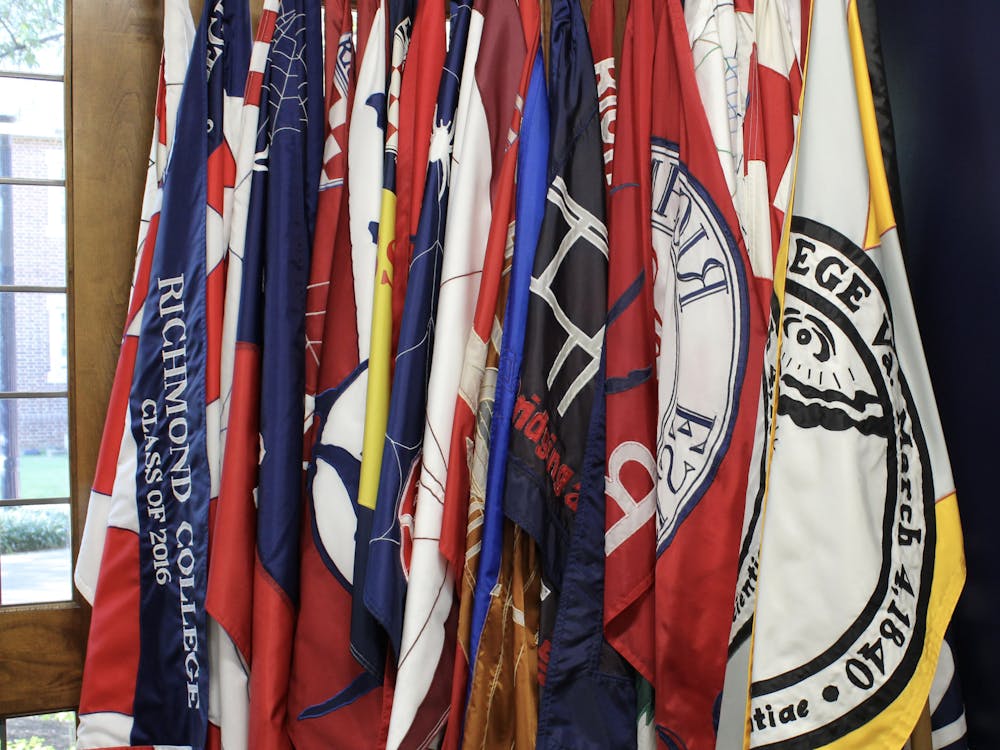Editor's note: The views and opinions expressed in this article do not reflect those of The Collegian.
While attending the Black Student Alliance’s town hall with University of Richmond President Kevin F. Hallock on Oct. 20, a feeling I’ve held since entering this campus was perfectly encapsulated by one of my peers. During the session where students voiced their various sentiments and grievances with being on campus, sophomore Alexis Rogers stood up and expressed the deep isolation she has observed between our campus and the greater Richmond community. To her, Richmond is too rich in diversity, art, talent and opportunities to be overlooked as much as it is.
Her notion that our campus was isolated is well-founded. Tucked away by winding roads and well-manicured greenery, geographically our university can certainly feel like an appendage to the greater Richmond region. Derek Miller, the Assistant Director of Community Relationships and Engaged Learning at the Bonner Center for Civic Engagement, said UR is in a “bubble” that makes the school feel like a separate part of the community instead of like a member of the community.
With a bustling city such as Richmond surrounding our campus, it’s hard to imagine that UR students wouldn’t participate in off-campus community activity. The CCE, which Rogers herself has been a member of for almost two years, has over 100 Bonner Scholars that are dedicated to ensuring student community involvement. Specifically, the CCE is striving to “champion civic engagement on campus and in the region” and “reduce barriers to civic engagement,” according to its 2017-2022 strategic plan.
Senior Kavon Thompson, who has been a Bonner Scholar for three years, can personally attest to these goals.
“The Bonner program has opened many avenues for me to even be able to engage,” he said.
From tutoring STEM students to volunteering at the Science Museum of Virginia, the program has really enlightened him on the ways to give back, he said. His gratitude for the organization grew as he detailed how it had also helped him to become more familiar with the city of Richmond. His testament aligns with the CCE’s claim of being a tool for exploring the region, according to their website.
Emilia Hodal, the administrative coordinator of student engagement and community relationships, has also been able to bond more with the Richmond community through the program.
“This has enriched my own participation in life in Richmond and helped me to recognize and connect to the vast network of people involved in making our city such a special, community-oriented experience,” she wrote in an email to The Collegian.
For Hodal, the self-proclaimed “newbie” who joined the CCE in December of 2021, this sort of community involvement was about being a “cognizant, active, humble neighbor and citizen,” with little to do with self-gratification, she wrote. Above all, she wants to make the campus community more welcoming and diverse by making it less isolated, homogeneous and disconnected.
However, the CCE is not the sole remedy for UR’s seclusion. Miller, though he plays a role at the CCE, has partaken in another kind of community action with the East End Cemetery Collaboratory, which works “to support the years-long effort to restore the cemetery by engaging students and faculty across disciplines and institutions,” according to their mission. The collaboratory centers around a historic African American burial ground in the city of Richmond, and consequently, puts community dialogue, as Miller asserts, at the forefront of their operation so they may listen and learn from the community partners and descendants they work with and improve their efforts.
Miller’s efforts center around disrupting the same isolation and exclusivity Hodal mentioned. But specifically, he, like Hodal, is aiming for a culture shift by introducing students to the realities that live outside the campus — realities like structural racism that before the collaboratory, most students viewed only as an idea they saw on paper, he said. With this goal in mind, he wants to transform UR into the “University with Richmond.”
Enjoy what you're reading?
Signup for our newsletter
Richmond is occupied by more than 200,000 people, and we are a part of its residents. This city that we live in is not simply a backdrop for the school we attend but a vibrant and burgeoning place that we all can contribute to. And I sincerely believe the work that Rogers, Miller, Thompson and Hodal are all putting in is a testament to this, just as they sincerely hope for you to join them in their work. The shift away from exclusivity certainly does start with the students.
“I think our job as staff is to steward these changes with students leading the way, for students to helm the ship and for us to make sure the sails are hoisted,” she wrote.
The CCE, according to all that I mentioned, is a great place for students to start this voyage. It has an abundance of resources for those interested in things like service learning, volunteering and community-based learning, and an office, located in Suite 201 on the second floor of Tyler Haynes Commons, that’s open 2 pm-4 pm Monday-Thursday for advising.
Contact city and state writer Grace Randolph at grace.randolph@richmond.edu.
Support independent student media
You can make a tax-deductible donation by clicking the button below, which takes you to our secure PayPal account. The page is set up to receive contributions in whatever amount you designate. We look forward to using the money we raise to further our mission of providing honest and accurate information to students, faculty, staff, alumni and others in the general public.
Donate Now


